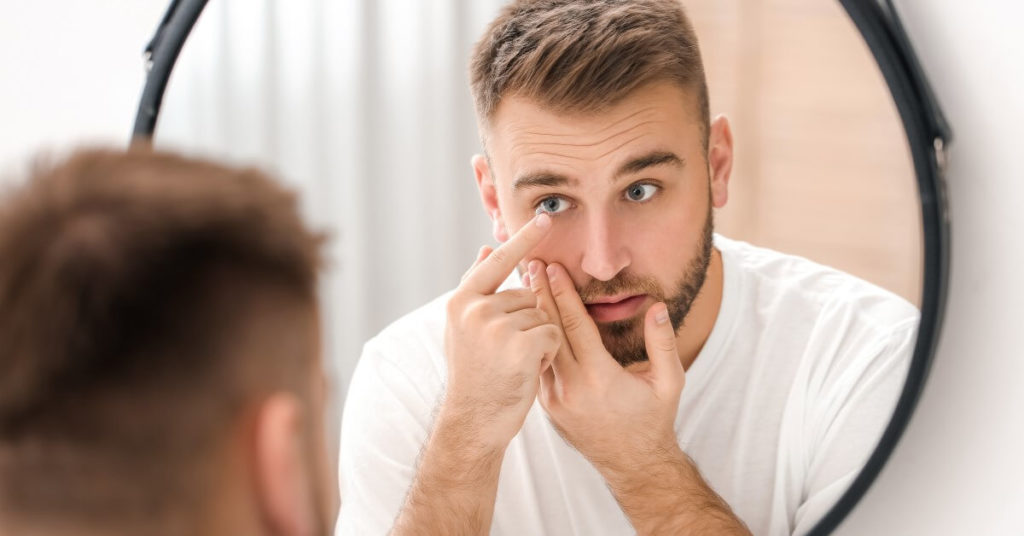
A Word About Contact Lenses | Tips for Healthy Contact Lens Wear Ability
Overview
Contact lenses have some crucial roles to play in the lives of those who wear them. They are meant to improve the wearer’s vision, but they have the added effect of boosting confidence about one’s appearance.
Additionally, contact lenses can mean freedom from worry about breaking, misplacing, or seemingly eternally cleaning prescription eyeglasses.
Whether you’re a first-time wearer of contact lenses or have had them for a while, some universal tips can be helpful when it comes to ensuring your eye care stays comfortable, healthy, and effective. Read on for more.
A Word About Contact Lenses
You may be surprised to know that the concept of contact lenses has been around since the 16th century and has slowly been perfected to where it’s the reliable and comfortable vision aid it is today.
Contact lenses work like glasses to correct refractive errors and maintain long-term eye health. But rather than wearing a frame on your face, as is the case with glasses, contacts stick to the tear film on the eye surface and essentially “float” with the natural movements of the eyes.
Available in soft or hard versions, with soft being far more popular due to comfort, contact lenses offer the additional advantages over glasses in that they don’t fog up, get wet or get in the way of any physical activities – in short, they improve the wearer’s quality of life.[1]
Their drawback over glasses lies mainly in the care aspect. They require much more attention and maintenance than glasses, but this article is meant to help with that.
Tips for Healthy Contact Lens Wear Ability
1) Clean Hands for the Win: Wash your hands before you handle your contacts – whether putting them in or taking them out. Our hands have germs on them practically all the time, and you certainly don’t want any of that in your eyes. Use mild, gentle soaps and avoid any heavy-scented, oily types.
Also, be aware that bacteria can live in tap water, so after washing your hands, dry them well with a lint-free towel.
2) Clean Lenses, Happy Eyes: Some germs that end up naturally on contact lenses can cause serious eye infections. It’s, therefore, essential to ensure that your lenses are kept clean by rubbing and rinsing them and storing them in a new contact lens solution after every use. Fortunately, many ways to clean your contact lenses exist on the market.
Multi-purpose lens solutions are all-in-one systems used to clean, rinse, disinfect, and store soft contact lenses. There are separate cleaning and rinsing products as well if you so prefer.
Caution is advised with ‘no-rub’ solutions that claim rinsing alone works without rubbing. Studies have shown that these are not as effective at disinfecting the surface of the lens, so take the time to rub them clean too.[2]
As mentioned, tap water can contain bacteria that should not go near your eyes, so please don’t use it to rinse your lenses. Unless your eye doctor advises otherwise, always remove your lenses before a shower or swimming.
While on the topic of bacteria – never put your lenses in your mouth or use saliva to moisten them.
3) Don’t Sleep Wearing Contacts: Even people who have never worn contact lenses know this rule – never wear your lenses for sleep, not even for a nap, and not even the types of contacts that market themselves as approved for overnight or extended wear.
The reason for this is that keeping your lenses in a while sleeping increases the risk for an infection such as microbial keratitis – a form of corneal infection – by up to five times,[3] so make sure they are taken out and cleaned before hitting the sack – no matter how tired you are.
4) Sharing is Not Caring: Never share your contact lenses with anyone. It’s a myth that one can share these with friends and family because it can cause severe infections due to cross-contamination. And it doesn’t just end there. The likelihood of a friend or a family member sharing the same measurements and prescription requirements as yourself is very slim. It can cause irritation or even injury to the cornea. All in all – sharing your contacts is not a good habit to get into.
If you put in someone else’s contacts by mistake and realize this later – take them out and replace them with your own. Eye health is not worth any risk.
5) Be a Follower: Of your eye doctor’s orders, that is. Replace your lenses as frequently as your eye care specialist advises, even if they’re not worn daily, and wear your contact lenses only for the recommended time and days of the week as advised.
Talk to your optometrist to understand what the best contact solution and eye drops are for you. Talking to your optometrist is an excellent idea before considering any contact lens or eye care product.
6) A Case for the Lens Case: We would be remiss not to give some tips about a part of your contact lens care regimen that many people don’t think about or forget about altogether – the contact lens case.
By now, you’d be forgiven for thinking that bacteria are everywhere – and that is because they are! Your lens case is no different, so make sure that in addition to cleaning your contact lenses, your lens case is cleaned just as carefully. Rinse it with a disinfecting solution every night and dry it with clean tissue.
And to be extra careful, replacing your lens case about four times a year at least is a good idea.
References:
- Kandel H. (2022). Quality-of-life outcomes of long-term contact lens wear: A systematic review. Contact lens & anterior eye : the journal of the British Contact Lens Association, 45(1), 101521. https://doi.org/10.1016/j.clae.2021.101521
- Cho, P., Cheng, S. Y., Chan, W. Y., & Yip, W. K. (2009). Soft contact lens cleaning: rub or no-rub?. Ophthalmic & physiological optics : the journal of the British College of Ophthalmic Opticians (Optometrists), 29(1), 49–57. https://doi.org/10.1111/j.1475-1313.2008.00606.x
- Dart, J. K., Radford, C. F., Minassian, D., Verma, S., & Stapleton, F. (2008). Risk factors for microbial keratitis with contemporary contact lenses: a case-control study. Ophthalmology, 115(10), 1647–1654.e16543. https://doi.org/10.1016/j.ophtha.2008.05.003


